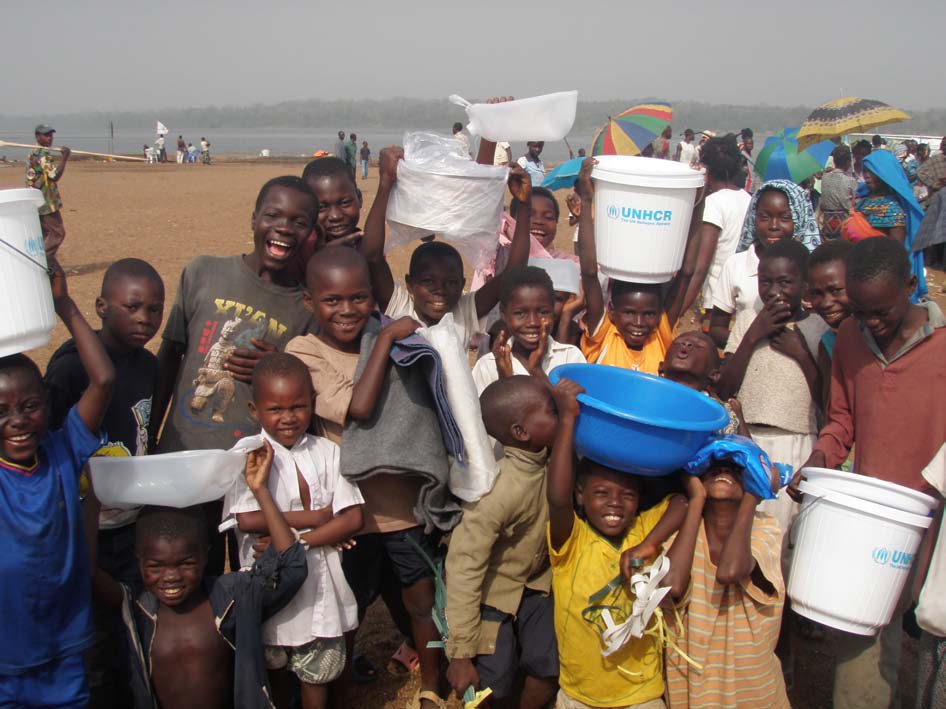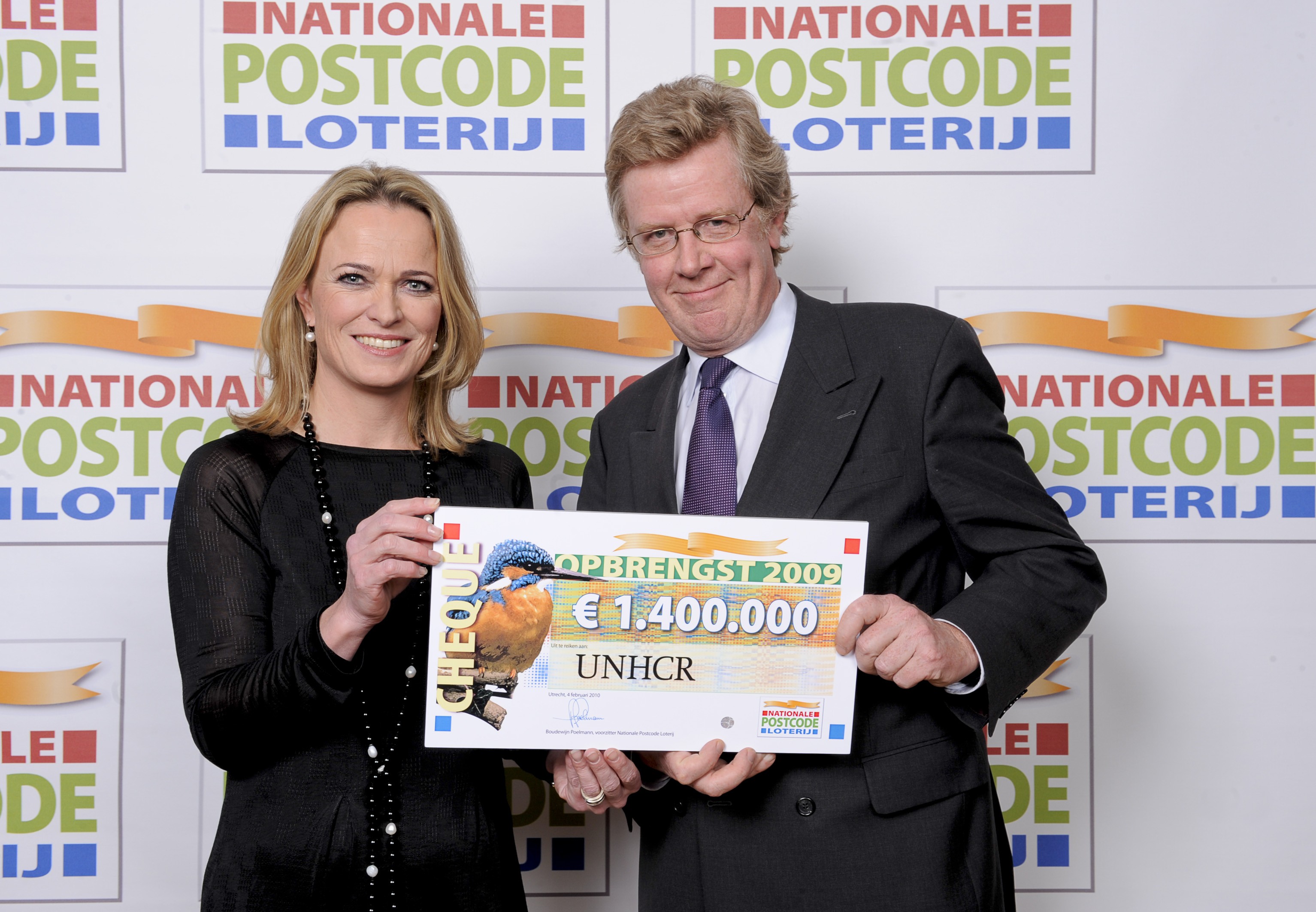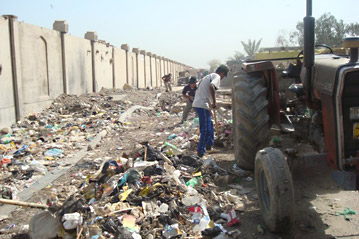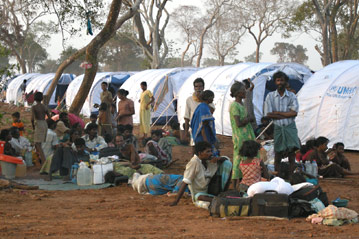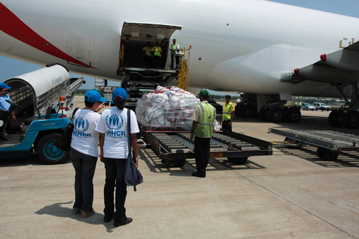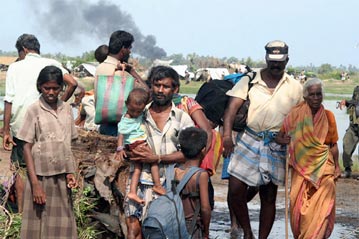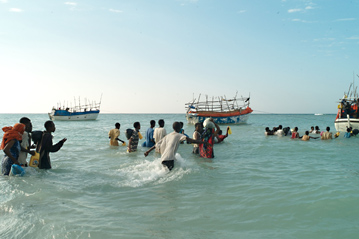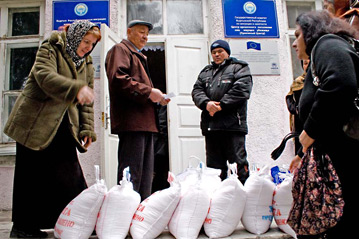Go-and-See visit by displaced Afghans gets underway
Go-and-See visit by displaced Afghans gets underway

MAIMANA, Afghanistan, Feb. 12 (UNHCR) - Displaced Afghans began today a go-and-see visit to north-west Afghanistan's Faryab Province that will give them a first-hand look at conditions there and decide if returns are possible two years after thousands fled ethnic violence in the area.
Sixteen representatives of displaced Afghans residing in the south and west of the country and refugees from Pakistan started a tour organized by the UN refugee agency and the Afghan government to Faryab Province that will allow them to exchange views with provincial and local officials, commanders, recent returnees and minority communities.
Hundreds of thousands of Afghans were forced to become internally displaced persons (IDPs) during the civil war and record-long drought in the late 1990s. Inter-ethnic tension and violence in the waning days of the Taliban period caused further displacement.
Last year, the UN refugee agency helped more than 60,000 IDPs go back to their home areas by providing transport and family packages, while also ensuring that needy returnees got shelter assistance to rebuild their damaged homes. But the agency estimates that 220,000 people are still living outside their home communities.
More than 2.5 million Afghan refugees have returned to Afghanistan since the collapse of the Taliban government.
Today's mission intends to help boost returns to the north-west. It includes IDP leaders and representatives from the Shadayee encampment near Herat and Bala Murgab and Gormach, also in Herat Province. Kandahar Province's IDP communities are represented by 10 persons from Zhare Dasht camp.
Several refugee representatives from Pakistan's Balochistan Province came along in order to bring back fresh news from their home areas to the sprawling refugee settlements near Quetta.
General Ahmed Rashid Dostum's commitment before last December's Constitutional Loya Jirga or Grand Council to facilitate the return of IDPs to the north is expected to give a big boost to the effort of the Afghan government, UNHCR and other agencies to help resolve the plight of displaced persons from the north.
Over the next week, the IDP leaders will break up into groups, with one visiting Qaisar District, others visiting Almar, Khuja Musa and Khwaja Sabz Posh districts, and a fifth visiting Shirin Tagab and Dawlatabad districts.
Earlier this week, UNHCR's Chief of Mission Filippo Grandi travelled to Maimana and Mazar-i-Sharif to encourage leaders in northern Afghanistan to facilitate the return of tens of thousands of displaced persons who fled the region beginning in late 2001.
In coordination with the UN's Assistance Mission in Afghanistan and the Department of Refugees and Repatriation, Grandi met with provincial and district officials, military commanders, community leaders and people in Pashtun, Uzbek and Arab villages in an effort to lay the groundwork for a successful series of meetings by the IDP leaders. He also briefed officers of the British Army's Provincial Reconstruction Team, which is working in the area.
Grandi also met with General Dostum's aide, Sayed Noorullah, who confirmed Dostum's commitment to facilitate the return of refugees and IDPs.
The return of tens of thousands of displaced persons to the north-west is currently hampered by ongoing security problems facing civilians living in the area, particularly Pashtuns. More than 60,000 IDPs originally from various northern provinces are currently living elsewhere in Afghanistan.
The Afghan government and UNHCR have sponsored a series of initiatives, including the Northern Return Commission, the Displaced Persons' Council and the Badgis Return Task Force to try to address some of the obstacles to return.
Over the next month, the authorities and UNHCR plan to organise a series of visits by displaced persons to Jowzjan and Saripul provinces in order to try to give IDPs an impression of life in their home regions. And to allow regional leaders and local commanders a chance to hear the concerns of local residents who fled in early 2002.
The Badgis Return Task Force consisting of leaders from that province, recently visited Maslakh IDP camp to meet with some of the more than 11,000 people still encamped on the plains west of Herat.
The UN refugee agency hopes that the people remaining in Maslakh camp will follow the some 32,000 people who left the barren camp and returned to their home districts last year due to improvements in security and the end of the long drought.
In order to help areas of north-western Afghanistan to absorb returning refugees and displaced persons, the UN refugee agency is continuing to support various projects in the shelter, water, irrigation and infrastructure sectors.
Among the planned programmes to help boost the interdependency among majority and minority communities are coexistence initiatives such as irrigation systems for use by clusters of villages that in turn will form a shura or council to manage the resource. UNHCR also provides shelter assistance to needy returnees, supports community projects for the cleaning of karez - water supply channels - and the rehabilitation of access roads, and builds culverts and bridges in some areas.


